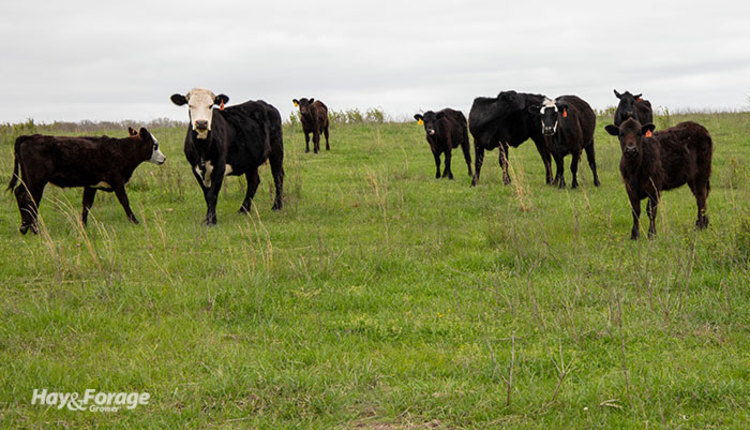
All eyes are on the long-term forecast as precipitation and temperature maps point to another impending drought year across much of the U.S. This comes as some perennial pastures are still trying to recover from the challenging growing conditions experienced last season.
In a recent article from the University of Tennessee, Bruno Pedreira notes a dry fall in the Volunteer State hindered tall fescue stockpiles and cool-season grass stands have appeared weaker this spring. Thus, the extension forage specialist outlines action steps for the upcoming months to safeguard forage growth in systems that have been previously affected by drought and need an extra boost to support grazing livestock.
Watch for weeds. Forage stands may be thinner and have lower yield potential this year if plants were unable to fully replenish their root reserves last fall. Thin, low-yielding pastures may also be subject to greater weed pressure. Therefore, now is the time to scout for cool-season weeds and terminate them when the opportunity arises.
“When the forecast indicates three or more consecutive days with temperatures exceeding 60ºF, cool-season weeds will be actively growing, and herbicides can be applied,” Pedreira writes.
Assess the spring flush. Pedreira recommends evaluating pasture condition during peak forage growth to determine if overseeding is necessary. For example, he suggests maintaining regular production practices in stands with 70% ground cover or more; however, frost seeding clover into these pastures next year will likely enhance forage yields.
Stands that exhibit 40% to 70% ground cover during the spring flush will warrant earlier reseeding to improve thickness. Aim to mow or graze forage down to 1 to 2 inches in mid-September before overseeding grasses at their full seeding rates, which Pedreira says is 15 to 20 pounds per acre for tall fescue, 10 to 15 pounds per acre for orchardgrass, and 8 pounds per acre for timothy.
“If the forage stand covers less than 40% of the ground, it is time to start over,” Pedreira asserts. “The optimal planting window remains mid-September. Burn down the entire field 10 to 14 days before drilling at the full seeding rate. Otherwise, this weak pasture will not be able to provide enough forage and weeds will most likely take it over.”
Seed warm-season annuals. By May, it might be worthwhile to seed warm-season annual forages like sorghum-sudangrass, teffgrass, or crabgrass for grazing. Pedreira says utilizing these species can improve a forage budget, and this practice offers more rest to cool-season pastures that are still recovering from last year’s drought.
It is likely too late to seed cool-season annuals like oats this spring, but Pedreira notes doing so would also give perennial pastures more time to rest by providing additional forage to graze during April and May. For future reference, he states the optimal timeframe to plant oats is between February 20 and April 1, and the recommended seeding rate is between 100 to 150 pounds per acre.
In addition to addressing weed pressure, assessing stand condition, and incorporating annual species into a forage system, taking soil samples and adjusting soil fertility this spring can give weak stands a second chance at long-term production. Being proactive now will aid in pasture recovery and help strengthen plants to withstand another grazing season.

